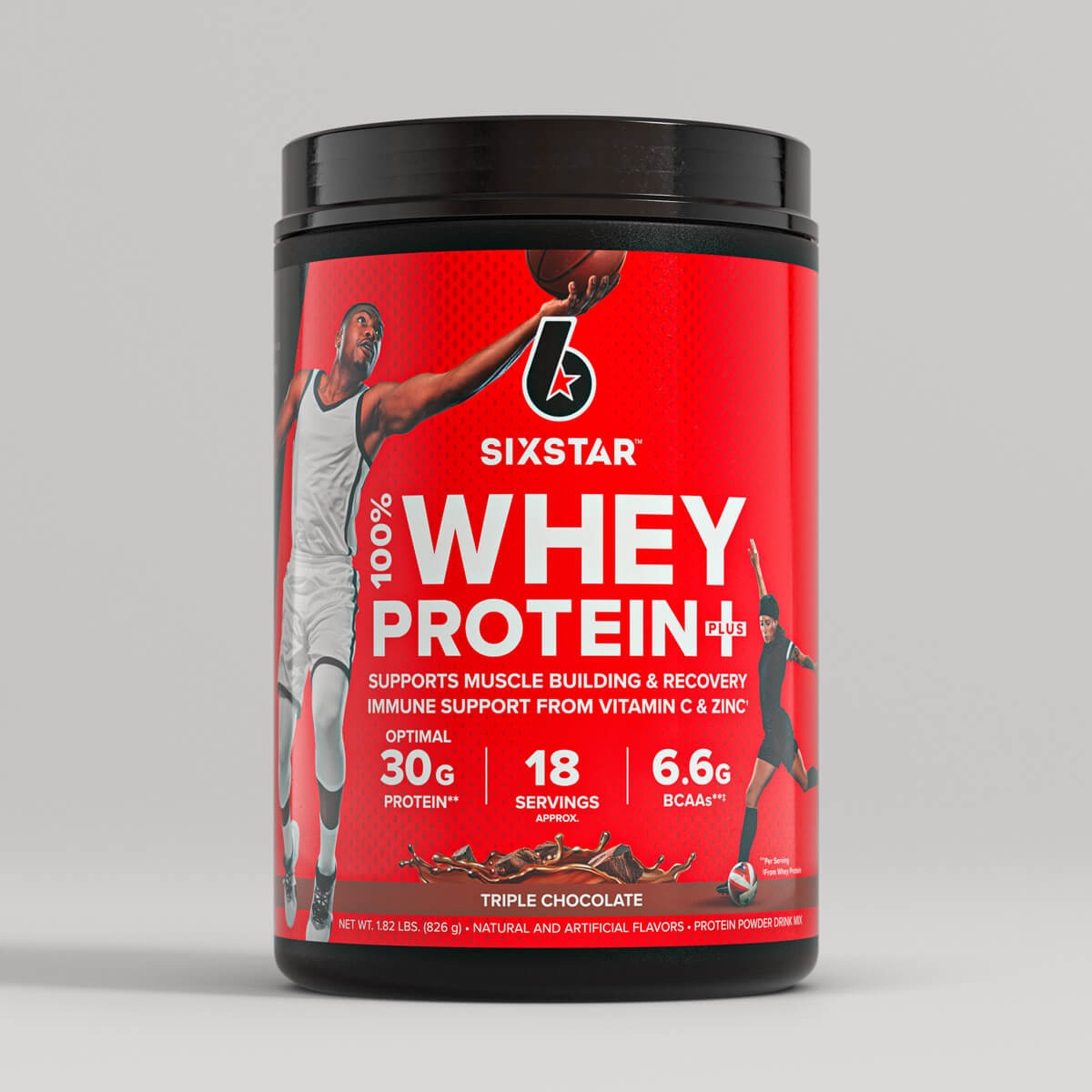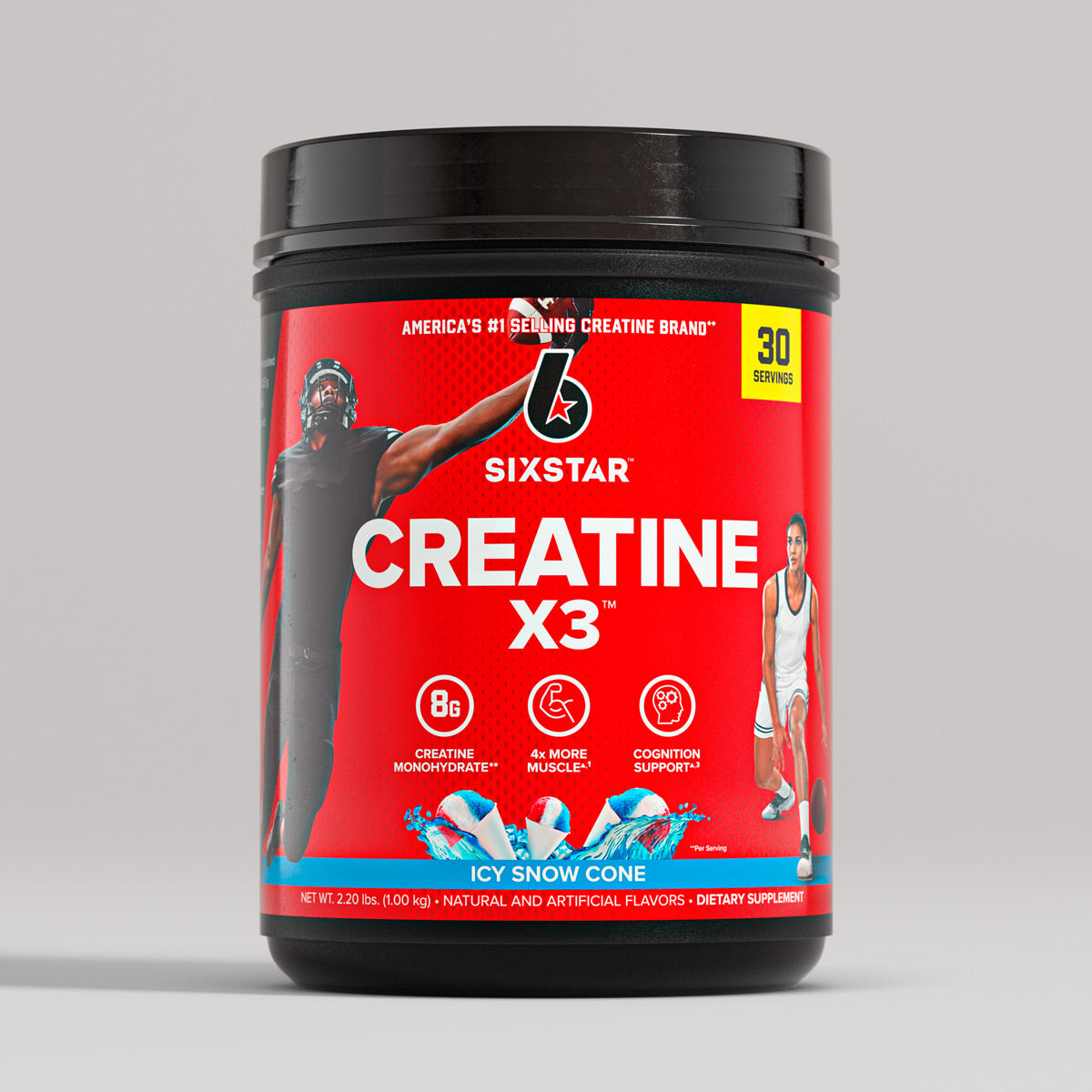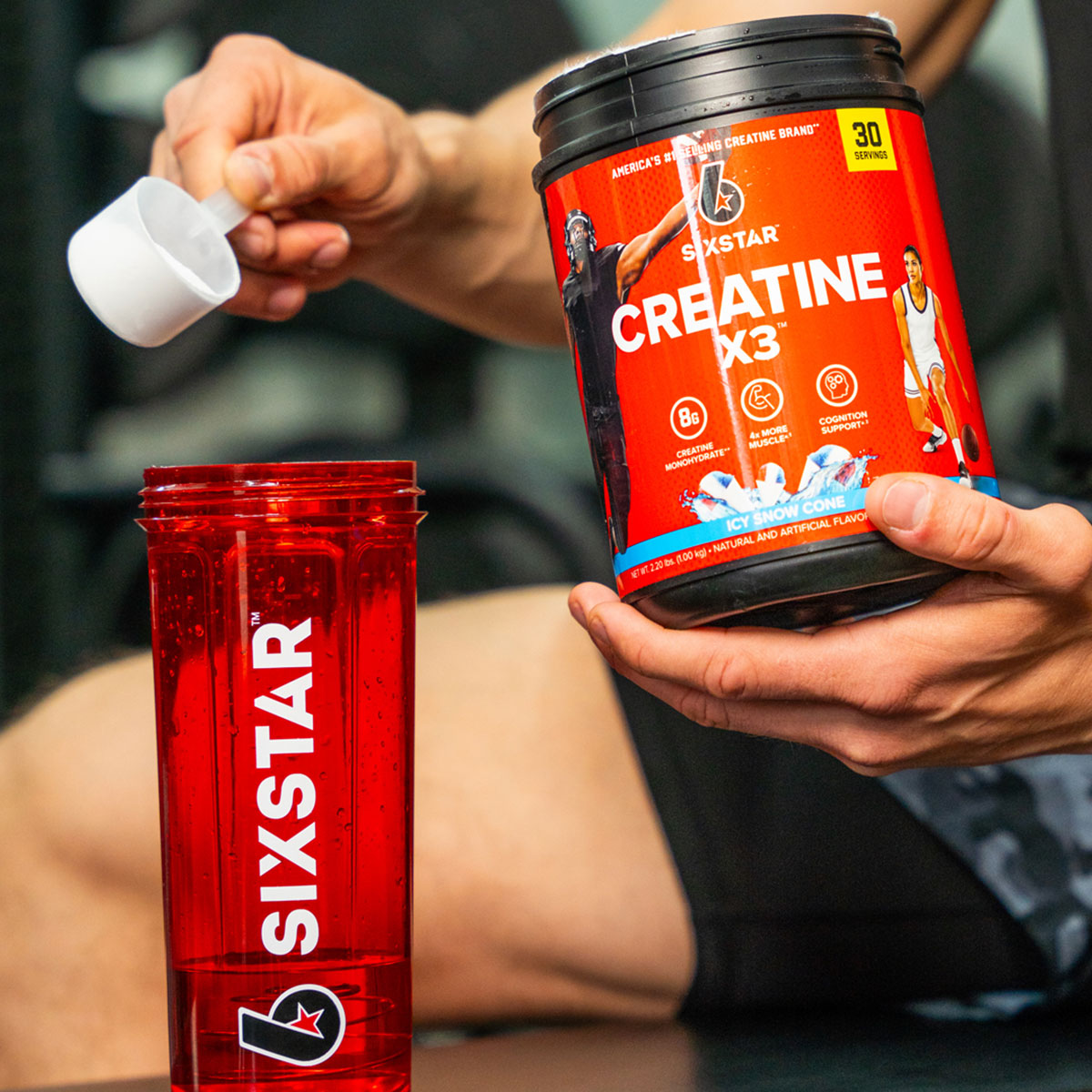Sports are intense - every second counts, every move matters. Athletes always maneuver for that extra edge, looking to perform faster, stronger, and more precisely.
Rigorous training sessions, special diets, state-of-the-art equipment – they’re an omnipresent fixture in the routines of all high-level competitors. But more and more are extolling the benefits of yoga for athletes.
This ancient practice is experiencing a modern-day renaissance among the sporting elite. But it’s not a word that evokes urgency or impact. Nevertheless, it's not all flexibility or inner peace; yoga offers tangible benefits that can elevate performance to new heights and keep it there for longer.
And goat yoga! It’s a thing. But we’re talking GOAT yoga. Some champions of the games of hockey, tennis, etc have been known to perform yoga. They, and many others, have turned to the mat. For recovery, yes. But also, as a secret weapon to supercharge their prowess. You can, too.
Buy Protein Powder for Athletes (Benefit from Latest Offers)
"Yoga isn't just about the body; it's also about the mind, and it's a technique that has really helped me."
Wondering how holding a pose can possibly help you sprint faster, jump higher, or hit (or get hit) harder? You're in for a revelation. Strap in and get ready to unravel how 11 athletic yoga poses can evolve your playstyle to the next level – whatever sport you want to dominate.
The Science and Core Benefits of Yoga for Athletes

Yoga is a time-tested practice that has benefited millions of people over thousands of years. But it’s also science-tested. Here's a brief overview of the advantages the ancient art can bring.
How many could help raise your game?
(The correct answer is “all of them!”)
1. Flexibility and Coordination
Yoga famously enhances flexibility, which is great for athletes. But it also heightens proprioception (body awareness), a critical element of coordination. A 2016 report found that twice-a-week sessions of yoga stretches for athletes significantly improved balance and flexibility. The control group missed out big time. An athlete's workout program has to be an all-round one, and Yoga checks the box.

2. Mindfulness and Concentration
Reread LeBron’s quote up top: yoga for athletes is equally about the mind. Practicing yoga cultivates mindfulness and helps coordination, awareness, and precision. A 2017 meta-analysis even found that consistent mindfulness practice improved accuracy in shooting, dart throwing, and other sports.
3. Injury Prevention and Recovery
Athletes are always at risk of injuries and illness. Yoga can be a protective shield. For instance, a 2020 study revealed that those who participated in a 10-week yoga program were less tired, less sore, and suffered fewer injuries than their competitors.
4. Enhanced Respiratory Capacity
Breathe. It’s simple, right? Well, stress makes it tough to maintain breath control, and many otherwise great competitors get gassed before the final whistle. Fortunately, a yoga routine opens up the posture and increases respiratory capacity. It's invaluable for athletes, especially those in endurance sports.
5. Improved Range of Motion
Regular yoga stretches for athletes enhance flexibility, mobility, and range of motion - essential for peak output.

6. Stress Relief and Relaxation
Proper recovery is key, and the rigors of training and competition can be stressful. Yoga offers a sanctuary that promotes relaxation, stress relief, and healthy sleep patterns. Remember, recovery and longevity go hand in hand!
The 11 Must-Try Athletic Yoga Poses
Incorporating the following poses into your yoga routine can transform your athletic performance. They target a bunch of major (and minor!) muscle groups while addressing the mental dimension of sport. It’s holistic – a deeper mind-body connection to help you excel.
Standing Position
1. Warrior I:
- How to Perform: Begin by standing tall with feet together. Step back with one foot, placing it at a 45-degree angle. Ensure the front foot faces forward. Bend the front knee, aligning it over the ankle. Raise your arms overhead, reaching towards the sky, palms facing each other.
- Benefits: Warrior I is a dynamic pose that enhances balance, stretches the hips and thighs, and fortifies the legs. It's particularly beneficial for runners and cyclists, aiding in stride and pedal efficiency. Moreover, it promotes good posture and spinal alignment, essential for athletic form.

2. Triangle Pose:
- How to Perform: From a standing position, separate your feet about 3-4 feet. Turn one foot out 90 degrees and the other slightly inward. Extend arms at shoulder height. Hinge at the hip, reaching one hand towards the ankle, the other skyward.
- Benefits: Triangle Pose is multifaceted. It bolsters lateral flexibility, crucial for sports like tennis or basketball. The pose also strengthens the inner thighs and opens the chest and shoulders. It's great for respiratory depth.

3. Chair Pose:
- How to Perform: Stand upright with feet hip-width apart. Imagine there's a chair behind you and lower your hips back and down, as if you're about to sit. As you do this, raise your arms overhead, keeping them parallel to each other and your ears.
- Benefits: Chair Pose is a lower body strengthener. It targets the thighs, calves, and glutes, building endurance. Skiers, climbers, and even sprinters can benefit from the power and stamina this pose cultivates.

Prone (Belly Down)
4. Plank:
- How to Perform: Start on a flat surface, positioning yourself as if you're about to do a push-up. Your wrists should be directly under your shoulders, fingers spread wide for better balance. Engage your core muscles tightly, ensuring your body forms a straight, unbroken line from the top of your head to your heels. Your gaze should be slightly ahead of your hands, keeping your neck aligned with your spine.
- Benefits: The plank is a foundational pose in yoga and general fitness. It builds core strength and stability, pivotal for maintaining good form in every sport. A strong core improves performance and acts as a protective shield against potential injuries.
5. Pigeon Pose:
- How to Perform: Start in a plank. Bring one knee forward near the wrist. Extend the opposite leg back. Ensure hips are square. For a deeper stretch, lean forward.
- Benefits: Pigeon Pose is a profound hip opener, targeting the hip flexors and glutes. It's invaluable for athletes in repetitive activities like cycling and running, alleviating tension and promoting hip mobility.

6. Downward Dog:
- How to Perform: Begin in a tabletop position with your wrists aligned under your shoulders. Press your hands forward, lift your hips, and extend your toes, forming an inverted 'V' with your body. Ensure your head is aligned with your arms, and heels are pushing towards the ground.
- Benefits: This pose stretches the entire backside of the body, including the hamstrings, calves, and spine. It also strengthens the arms and shoulders, benefiting athletes who require upper body strength.

7. Child's Pose:
- How to Perform: Begin by sitting on your heels. Gently lean forward, extending your arms out in front of you. Allow your forehead to rest softly on the ground, feeling a stretch along your spine.
- Benefits: Child's Pose is more than just a resting position. It offers a deep stretch to the back, aiding in releasing tension after strenuous activities. Athletes will find this pose especially beneficial for recovery after intense workouts, as it promotes relaxation and eases muscle fatigue.
Shop BCAAs at a Discount
Supine (On Your Back)
8. Boat Pose:
- How to Perform: Sit on a mat with your knees bent. Lean back slightly, ensuring your spine remains straight. As you do this, lift your feet off the ground, challenging your balance. Extend your arms forward, keeping them parallel to the ground. For those seeking a more intense workout, straighten your legs, forming a 'V' shape with your body.
- Benefits: Boat Pose is a core dynamo. It hones in on core strength and balance, which are crucial for stability during dynamic movements in sports, from basketball pivots to soccer kicks.

9. Bridge Pose:
- How to Perform: Lie flat on your back on a comfortable surface. Place your feet flat on the ground, hip-width apart, ensuring they're close to your buttocks. Pressing firmly into your feet, lift your hips towards the ceiling, aiming to form a straight line from your shoulders to your knees. Intertwine your fingers beneath your body, and roll your shoulders inward to elevate your hips even higher.
- Benefits: Bridge Pose is a powerhouse. It strengthens the back, glutes, and hamstrings. Moreover, opening up the chest and shoulders enhances lung capacity, making it particularly beneficial for swimmers. In addition, racquet sports competitors can benefit from improved shoulder flexibility.

10. Legs-Up-The-Wall:
- How to Perform: Choose a spot next to a wall. Sit sideways, then gently lie back, simultaneously swinging your legs up against the wall. Your hips should nestle close to the wall, and your arms can rest by your side or belly.
- Benefits: This restorative pose is a boon for tired legs. It enhances circulation, mitigates swelling, and provides a deep sense of relaxation. Athletes, especially runners or those in endurance sports, will find it invaluable for recovery after exhaustive sessions.
Corpse Pose:
- How to Perform: Lie flat on a mat, allowing your arms and legs to splay out comfortably. Close your eyes, letting go of active thoughts, and focus on taking deep, rhythmic breaths.
- Benefits: More than just lying down, the Corpse Pose is a conscious effort to relax and rejuvenate. It aids in physical recovery, diminishes stress, and fosters mental tranquility. It's the ideal conclusion to any rigorous workout or yoga routine, allowing athletes to internalize and reflect on their training achievements.

Yoga: Finding Balance for Athletic Success
Precision, strength, coordination, reaction time, spatial awareness, and agility are paramount in the sporting world. They are often the criteria by which a competitor’s performance is judged. So, it's easy to overlook the subtle power of yoga for athletes.
It distills benefits accrued over thousands of years into a routine that can enhance anyone’s performance – from a Pop Warner preseason to the NBA Finals. Whether you need to foster flexibility and core strength or cultivate mental resilience and focus, the 11 athletic yoga poses above can be the secret ingredient in your training regimen.
It makes no difference if you’re at the starting gun on your sports journey or running the anchor leg; give these poses a try. Our yoga stretches for athletes might just add some new dimensions to your training and unlock potential you never knew you had.
Remember, it's not always about pushing harder; sometimes, it's about stretching further.
BUY SPORTS NUTRITION & SUPPLEMENTS FROM SIXSTAR
Read Our Top Read Blogs:
- How Much Hydration Do Athletes Really Need?
- Testosterone and How It Affects Athletic Performance?
- Basic 6 Steps to an Athlete's Recovery
- Strength Training for Athletes
The links used in this article are being provided as a convenience and for informational purposes only; they do not constitute an endorsement or an approval by Iovate Health Sciences International Inc. or any of its affiliates (“Iovate”) of any of the products, services or opinions of the corporation or organization or individual. Iovate bears no responsibility for the accuracy, legality or content of the external site or for that of subsequent links. Contact the external site for answers to questions regarding its content.
References:
- Arbo, Gregory D et al. “Mitigating the Antecedents of Sports-related Injury through Yoga.” International journal of yoga vol. 13,2 (2020): 120-129. doi:10.4103/ijoy.IJOY_93_19
- Bühlmayer, Lucia et al. “Effects of Mindfulness Practice on Performance-Relevant Parameters and Performance Outcomes in Sports: A Meta-Analytical Review.” Sports medicine (Auckland, N.Z.) vol. 47,11 (2017): 2309-2321. doi:10.1007/s40279-017-0752-9
- Polsgrove, M Jay et al. “Impact of 10-weeks of yoga practice on flexibility and balance of college athletes.” International journal of yoga vol. 9,1 (2016): 27-34. doi:10.4103/0973-6131.171710































